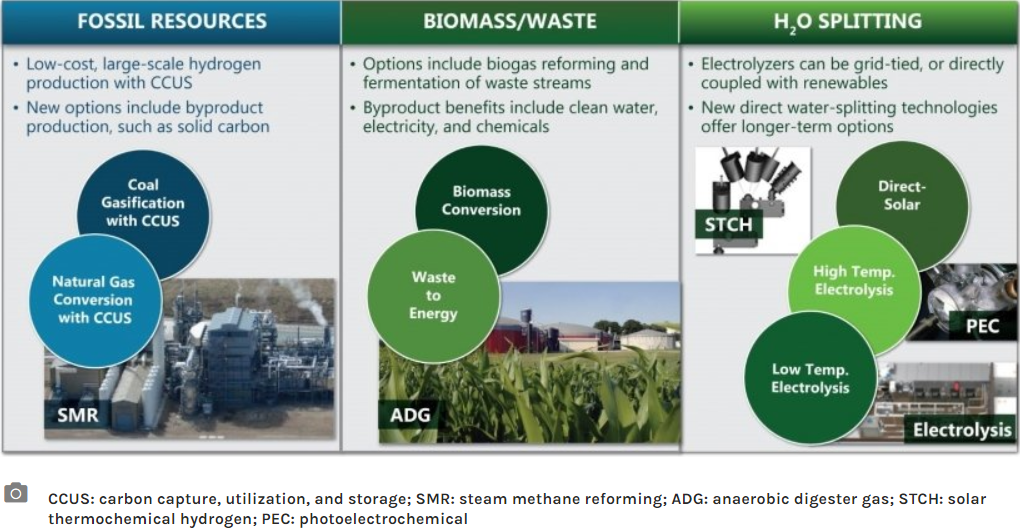What is the Best way to Produce Hydrogen ?
In her 2021-22 Budget Speech, India’s Finance Minister Nirmala Sitharaman announced that India will launch its National Hydrogen Energy Mission (NHEM) in 2021-22. Previously during RE-Invest Summit, PM Modi highlighted the importance of niche renewable technologies like hydrogen in the renewable energy (RE) mix.
Though the plan was lined up, the Budget did not specify the details of the scheme. Later on 9th February, MNRE secretary Indu Shekhar Chaturvedi told the media that the government may come out with a draft on the mission in the next two months.
However, this announcement has got the nation talking about hydrogen and interesting prospects that it can hold.
There is a hot debate over whether or not hydrogen can compete with batteries, as battery costs are plummeting.
How can we Produce Hydrogen ?
Hydrogen is considered to be one of the key sources of clean energy for the future as it is a zero-carbon fuel. Hydrogen can be produced from various sources like natural gas, nuclear power, biomass, and renewable power like solar and wind. Consequently, there are three types of hydrogen – grey, blue and green.
The hydrogen fuel prepared from fossil fuels is called grey hydrogen, the hydrogen generated from carbon capture and storage options is called as blue hydrogen and the hydrogen produced from renewable power sources are called green hydrogen.
Though there are several ways of producing hydrogen, the most common methods are natural gas reforming and electrolysis (splitting water with electricity).

The other ways of producing hydrogen include reforming methanol and ammonia, and using microbes to convert biomass into the gas.
Natural Gas reforming
In the Natural Gas reforming, also called as steam methane reforming (SMR) route, carbon in natural gas and oxygen in water combine to form carbon dioxide, giving off hydrogen.. But the process also produces carbon dioxide.
Electrolysis
There are other way of making hydrogen is by electrolysis which involves splitting water into hydrogen & oxygen using electricity. But electrolysis is an inefficient route as it takes much energy to break the tight bond between hydrogen and oxygen atoms.
Currently, there is lot of research going on to improve the efficiency of this process. Researchers at the Centre for Nano and Soft Matter Sciences, Bengaluru, have recently synthesised a ‘coordinated polymer’ (cage-like structure) catalyst made with palladium and benzene tetramine [Pd(BTA)].
Also as power costs from renewable energy is decreasing sharply, electricity generation for electrolysis is shifting to solar power, wind etc.
Biomass gasification
Biomass gasification can be the cheapest route to produce hydrogen. In biomass gasification, the process yields hydrogen, methane, bio-coal.
Additionally, with the size of India’s agrarian economy, biomass-based hydrogen pathways hold a greater promise. With biomass based hydrogen system India can have a well distributed production of green fuel and there is also a potential of raising farmers’ income.
Having localised hydrogen production will also mitigate the dangers associated with transporting the highly inflammable fuel across the length & breadth of country.
Other Methods:
There also various other methods like photo-electro-chemical methods of splitting water in light and photo-biological water splitting using mircobes, to produce hydrogen. However, these methods are far from commercialisation.
So is Biomass Gasification the best way to produce hydrogen ?


